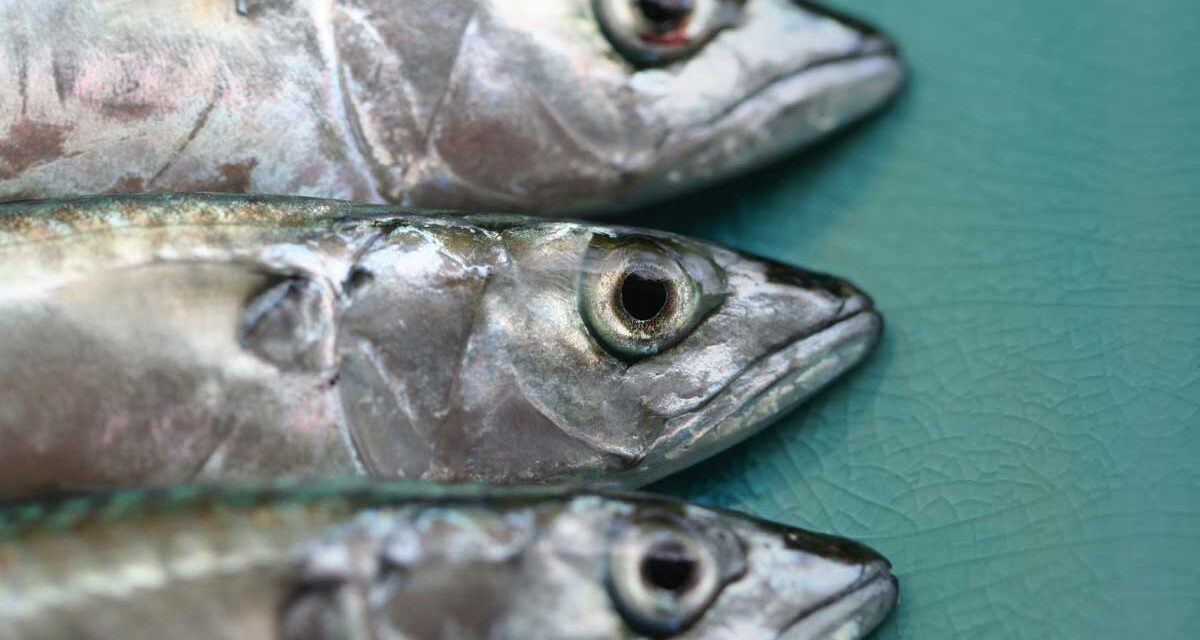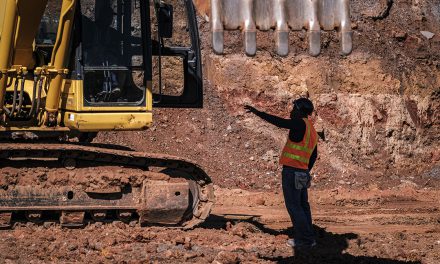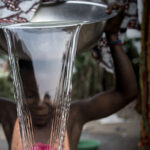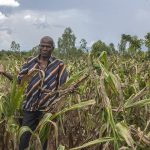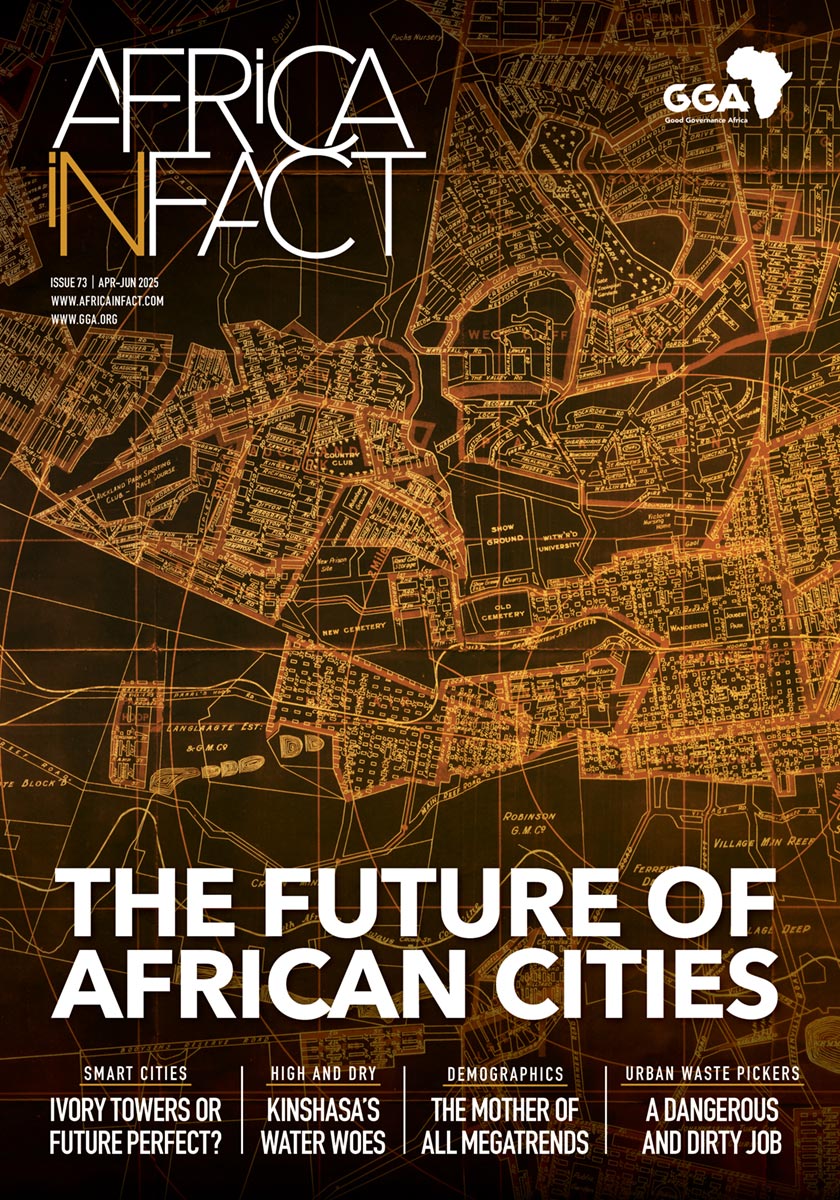Murmuring and shuffling, the men bunched together in front of the television camera and recording mobile phones pointed at them. About 60 of them gathered together beside a jungle gym on the playground of Kuisebmond Park in Walvis Bay, Namibia, on Saturday 22 February this year.
The men, former fishermen, were there to present a united front as their representatives read a petition condemning what they alleged was ongoing corruption in a Namibian government scheme, meant to assist them but which had cost them their jobs. The matter had become known as the Fishrot corruption scandal.
“Even though the people don’t want to admit it, even though people don’t want to see it, even though people don’t want to understand it, and even though people don’t want us to speak the truth, this is the time that each and every Namibian has to hear the truth of what we are saying and what we have observed and realised, and the evidence that we have to present to the Namibian nation.”
This was the impassioned opening statement of Immanuel Petrus, chairperson of the former fishermen, as he addressed himself directly to the Namibian Broadcasting Corporation (NBC) camera.
Most of the former fishermen are beneficiaries of the Government Employment Redress Programme (GERP), a scheme jointly administered by the Namibian ministries of fisheries and marine resources and labour, industrial relations and employment creation.
The GERP was created following a mid-2020 cabinet decision to orchestrate re-employment of most of the more than 2,000 fishermen and fisheries workers who lost their jobs as a direct result of what appears to be the largest case of grand-scale corruption in independent Namibia to date: the Fishrot scandal.
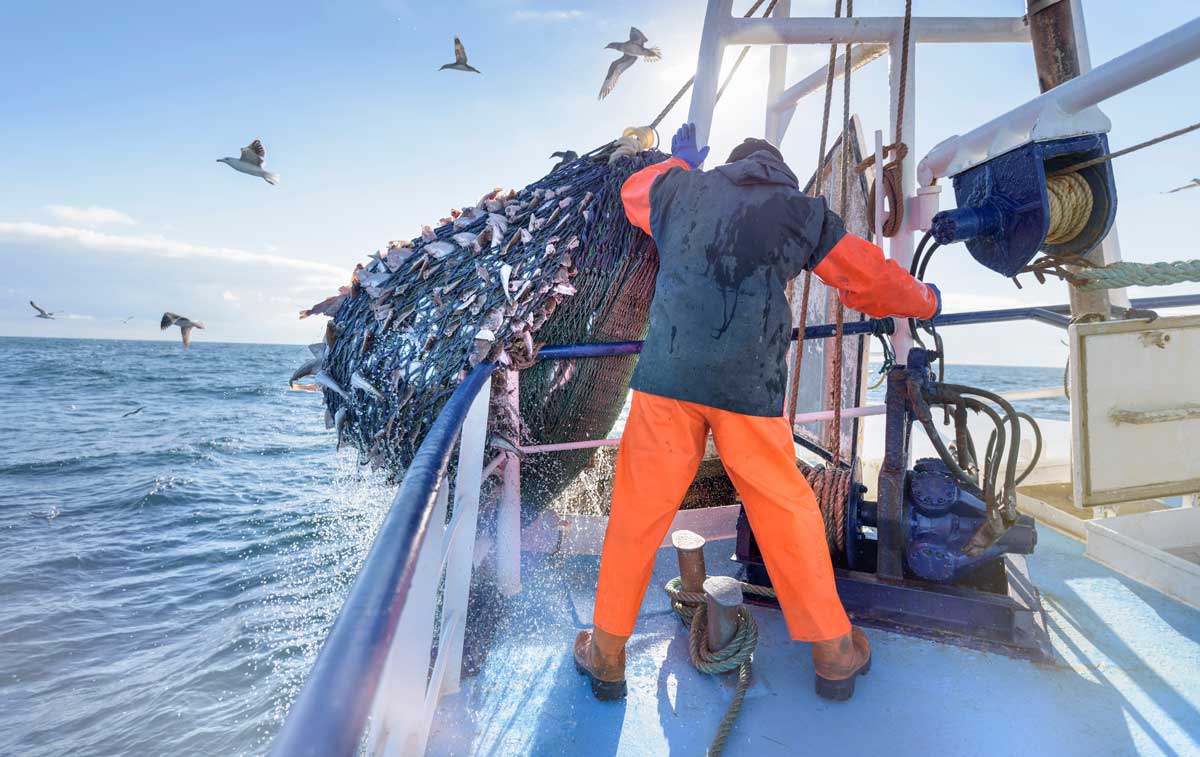
Photo: Monty Rakusen / Getty Images
Through the GERP scheme, fishing quotas are awarded to participating fishing companies to enable them to employ Fishrot-affected fishermen or to pay those who can’t be employed – the majority – a minimum N$4,000 (about $220) monthly stipend while they sit at home.
Since its inception in 2020, the GERP has suffered from a lack of transparency and accountability. It has also been plagued by accusations of irregular processes, conflicts of interest, and outright corruption against those charged with administering and implementing the scheme.
On that late-February Saturday, before reading out a petition for the cameras, spokesperson Petrus referred to what was happening under the GERP as “Fishrot 2” to approving nods from his solemn-faced comrades.
The controversies around the GERP are emblematic of the political, economic, and social impacts the Fishrot scandal has had, and continues to have, on Namibian society and national mood.
Fishrot, so named by Wikileaks, surfaced in early November 2019, when Namibia was weeks away from parliamentary and presidential elections.
It is the tale of a decade-long bribery scheme, notable for audacious and squalid greed and political corruption, which has landed two former cabinet ministers, a prominent politically connected businessman, and the head of the state-owned fishing company behind bars, along with a number of other individuals.
Fishrot has severely tainted the reputations and perceptions of both the ruling party and a late state president, as well as implicating a constellation of politically exposed and connected individuals who allegedly feasted at the trough and saw a multinational fishing company hastily flee Namibian waters to avoid accountability.
According to publicly available evidence, between 2012 and 2019 laws and regulations were altered and manipulated by fisheries and justice ministers in the cabinet of former president Hage Geingob to enable the capture of the horse mackerel sector by Icelandic fishing multinational Samherji. This company stands accused of paying bribes, totalling hundreds of millions of Namibian dollars, to the various politicians and officials now languishing behind bars awaiting trial.
The scheme involved the authorities reneging on quotas awarded to large, established fishing companies, which operated numerous vessels and fish factories, and diverting the quotas to Samherji-linked entities or consortia. This led to massive job losses at sea and on land, especially during the 2015-2017 period, as quota-denied companies downsized or closed shop, sold their vessels, or moved them out of Namibian waters, along with closing fish-processing plants at Walvis Bay.
More than five years after the scandal emerged, the devastation wrought by Fishrot continues to ripple outward from Walvis Bay, the epicentre of Namibia’s fishing industry and the primary crime scene, affecting communities in far-flung regions of the country where fishermen’s incomes support extended families and fund communal activities.
The extent of this devastation came to light through two human rights impact assessment studies – the first was a qualitative study and the second a quantitative study – led and conducted by myself on behalf of the Windhoek-based Institute for Public Policy Research (IPPR) in 2023 and 2024.
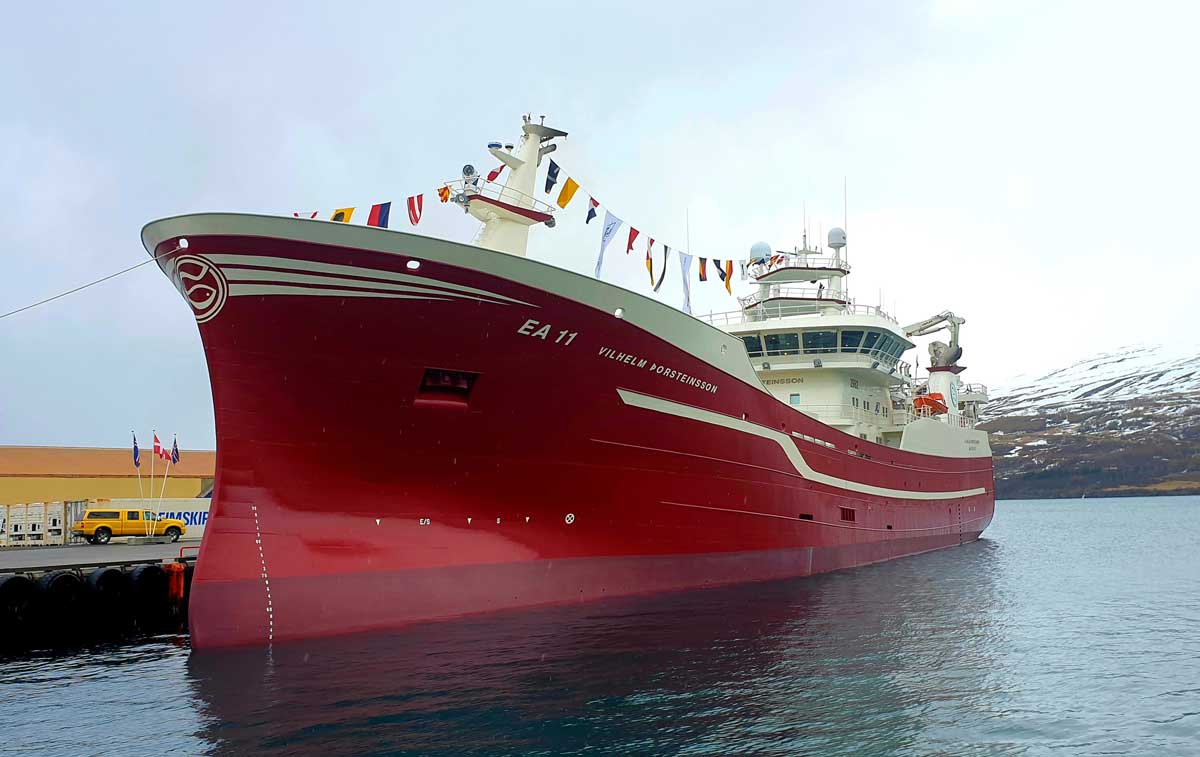
Samherji’s “Vilhelm Þorsteinsson EA 11” vessel for pelagic fishing in its home port, Akureyri, Iceland. Photo: Dagvidur / samherji.is
Despite Fishrot reverberating far and wide, nowhere have the effects been more evident than in Walvis Bay.
Following interviews conducted with former fishermen in the town, the first study found that “unexpected loss of work and remuneration led to a range of economic, social, and psychological harms, amounting to a violation of the right to dignity”.
Furthermore, “Fishrot has undermined or denied workers access to a dignified and decent life for themselves and their dependents”. Lastly, the study found that “the loss of employment and livelihoods has cast many into the indignity of poverty and destitution, which many of the interviewed former fishermen and fisheries workers are experiencing”.
At the launch of the first phase of the study, on 28 November 2023, Walvis Bay mayor Trevino Forbes said of the impact of Fishrot on the local economy: “The fishing industry was the industry that brought life to this community. All other businesses stem from the fishing industry in our harbour town. I do not know much about the fishing industry, but I can see what Fishrot did to Walvis Bay.”
The second-phase study, a quantitative assessment of the extent of conditions identified during the first phase, largely reiterated what the first phase found, stating “the distress and hardship continues to reverberate far beyond just the lives of the former fisheries workers”. Children, families and entire communities were “severely economically upended by the alleged corruption”.
It was prolonged “distress and hardship” that brought the former fishermen, most of them lowly educated and unskilled, to the Kuisebmond Park playground in February to express their displeasure at the lack of meaningful, well-paying jobs created through the GERP – while they perceived others getting rich from an initiative meant to assist and uplift them.
A few days after the February media conference, Judge Moses Chinhengo ruled that the High Court trial of the 10 Fishrot accused would start on 4 August this year – almost six years after the scandal broke and following years of bail applications, side hearings, and apparent delaying tactics by some of the accused in the case.
There is a widely held belief that politics are at play, especially as former high-ranking ruling party and government officials are charged or implicated.
With suspicions hanging over both the state’s prosecution of the case and the judge in the matter – Chinhengo is a Zimbabwean seconded to the Namibian bench – citizens already have relatively low levels of trust in both the state’s handling of corruption and in the courts, according to Afrobarometer, which found last year that only just over 50% of Namibians considered the judiciary in general to be trustworthy and unbiased.
This is why some find the idea of an international anti-corruption court attractive; it would allow for an impartial international tribunal in grand corruption cases such as Fishrot. Domestic courts are considered corrupt and politically compromised, according to IPPR executive director Graham Hopwood.
“A case at the IACCourt could help to raise the international profile of the Fishrot case and ensure that all those who are culpable are held to account, whether they are in Namibia, Iceland, or countries that facilitated the movement of illicit funds,” says Hopwood. “In this sense, an IACCourt case could help ensure that all the international actors are held accountable.
“We already see the problems with having large-scale corruption cases handled solely by domestic prosecutors and courts. There are delays in investigations in Iceland and in trials in Namibia. Extradition requests are frustrated or denied. And many of those who played a role in other jurisdictions will simply never be charged. But we know that money laundering and fraud occur across borders,” Hopwood adds. “In this sense, an IACCourt could be important for covering all the international dimensions of corruption cases and making sure those responsible are brought to book.”
However, he also expressed scepticism at such a court’s effectiveness, given that existing international tribunals, such as the International Criminal Court (ICC), have been plagued by perceptions of bias and questions of legitimacy since inception, and have also tended to take exceedingly long in finalising cases brought before them.
While recognising that a proposed IACCourt could be burdened with credibility concerns, Pusetso Morapedi, co-founder of the Botswana Centre for Public Integrity (BCPI) and III Africa coordinator and IACCourt Africa subcommittee member (see her own article on page 106), reiterated that the court had become necessary because grand-scale corruption has international and cross-border dimensions over which domestic courts do not have jurisdiction.
According to Morapedi, the Fishrot case is a perfect example of a case that could be handled by an IACCourt. While Namibia is set to prosecute 10 individuals in the case, Iceland, at the time of writing, had yet to make a single arrest and was probably years away from bringing a case to court.
Some of the former fishermen at February’s media briefing indicated they would prefer an international court or body to deal with their claims against the Icelandic company Samherji – and even against the Namibian government over its lack of fisheries sector reforms.
Frederico Links is a Namibian journalist, editor, researcher, trainer and activist. Research associate of Namibia’s Institute for Public Policy Research (IPPR). He is primarily concerned with democracy and governance, particularly corruption and maladministration. He is chairperson of the Access to Information in Namibia (ACTION) Coalition of civil society, media and social activists.

